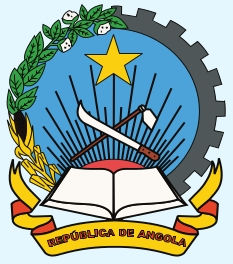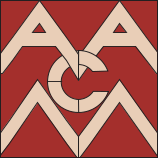ANGOLA

National Flag
Angola Was a Portuguese colony from the 16th century to 1975. The Country is the second largest petroleum and diamond producer in sub-Saharn africa.

Emblem
Profile:
Official Name - Republic of Angola
Nationality - Angolan
Chief City - Luanda
Location - South-central Africa
Population - 16,971,000 (Estimated in 2007)
Area - 1,246,700 km2 (23rd)
Language - Portuguese
Government - Presidential Republic
Currency - Kwanza (AOA)
Independence - 11th November 1975

Map
national anthem
Angola Avante
O Pátria, nunca mais esqueceremos
Os heróis do quatro de Fevereio.
O Pátria, nós saudamos os teus filhos
Tombados pela nossa Independência.
Honramos o passado e a nossa
História,
Construindo no Trabalho o Homem novo,
(repeat previous two lines)
CHORUS
Angola, avante!
Revolução, pelo Poder Popular!
Pátria Unida, Liberdade,
Um só povo, uma só Nação!
(repeat chorus)
Levantemos nossas vozes libertadas
Para glóriados povos africanos.
Marchemos, combatentes angolanos,
Solidários com os poroso primidos.
Orgulhosos lutaremos Pela Paz
Com as forças progressistas do mundo.
(repeat previous two lines)
TRANSLATION
O Fatherland, we shall never forget
The heroes of the Fourth of February.
O Fatherland, we salute your sons
Who died for our Independence.
We honor the past and our history
As by our work we build the New Man.
(repeat previous two lines)
CHORUS
Forward, Angola!
Revolution through the power of the People!
A United Country, Freedom,
One People, One Nation
(repeat chorus)
Let us raise our liberated voices
To the glory of the peoples of Africa.
We shall march, Angolan fighters,
In solidarity with oppressed peoples.
We shall fight proudly for Peace
Along with the progressive forces of the world.
(repeat previous two lines)
CHORUS

A Lady Wearing Traditional Ornaments
History
In 1575 Portugal established a colony at Cabinda based on slave trade. Within the Portuguese Empire, Most black African slaves were traded to Brazilian merchants arrived to Portugal's African ports from other Portuguese colony - Brazil (South America) - seeking cheap workforce for use on Brazilian agricultural plantations.
Exclave of Cabinda
With an area of approximately 7.283 km2 (2,800 square miles), the Northern Angolan province of Cabinda is unique in being separated form the rest of the country by a strip, some 60 km wide, of the Democratic Republic of Congo (DRC) to the east and south. Serra da Leba is one of the big wonders of the plateau of Huila in Lubango. Famous for its height and its natural architecture, the Mountain Range of Leba is also famous for its highway, a true section of a road almost fatal, without any protection which is long assigned as a “beautiful precipice”.


Colonial Era
In 1951, the colony was designated as an overseas province, called Portuguese West Africa. Portugal had a presence in Angola for nearly five hundred years.
Culture
Portugal ruled over Angola for 400 years and both countries share culture aspects : language (Portuguese) and the main religion (Roman Catholic Christianity). Angolan culture is mostly native Bantu which was mixed with Portuguese culture.

Celebrating their 30th independence
Economy
Consisting largely of tropical forest, Cabinda produces hardwoods, coffee, cocoa, crude rubber and palm oil. The product for which it is best known, however, its oil, which has given it the nickname, " the Kuwait of Africa". Most of the oil along its coast was discovered under Portuguese rule by the Cabinda Gulf Oil Company (CABGOC).
According to the Heritage Foundation, an American think tank, oil from Angola has increased so significantly that Angola today is China's biggest supplier of oil.
Climate
Angola's capital, Luanda, lies on the Atlantic coast in the north- west of the country. Angola's average temperature on the coast is 60 degrees Fahrenheit (16 o C) in the winter and 70 degrees Fahrenheit (21 o C) in the summer.

Damba Club, serra-da-leba


